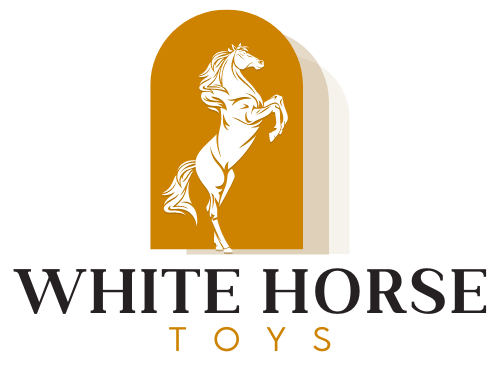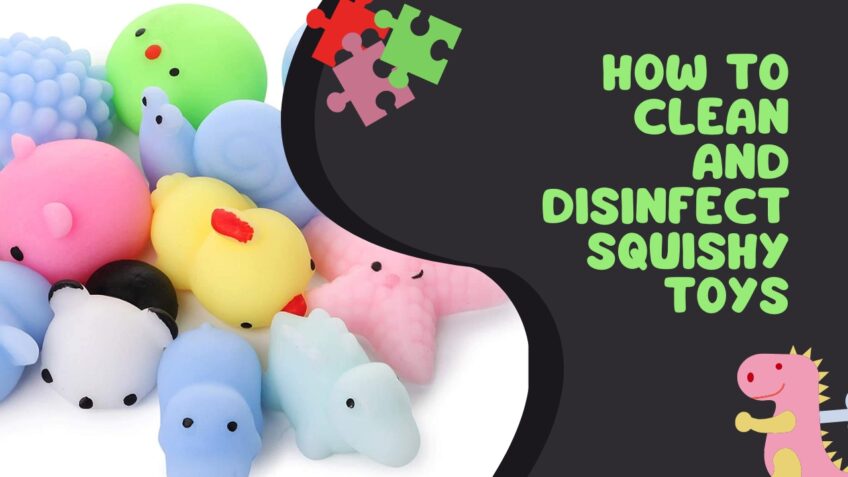Squishy toys are a popular and beloved item among kids and adults alike. However, with frequent use, they can accumulate dirt, grime, and even bacteria, which can make them sticky and unhygienic. Cleaning and disinfecting your squishy toys is important for their appearance, health, and safety.
In this guide, we will cover different methods for cleaning and disinfecting your squishy toys, from simple household items to specialized products. With these easy tips, you can restore your squishy toys to their original softness and ensure they remain safe and enjoyable to use.
Preparing for Cleaning
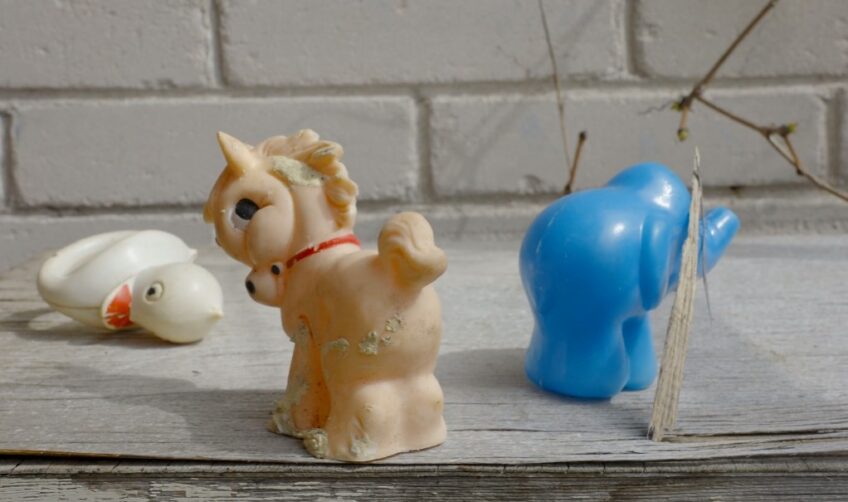
Cleaning them may sound easy, but it can be a bit tricky. It is not a one-size-fits-all process, and much depends on the materials that make up the toy. Therefore, the first step in any cleaning process should be to do a bit of research and determine what the toy is made of. This way you can make sure you are using the correct cleaning products and techniques.
Gather necessary supplies
Before you start cleaning them, it’s essential to make sure that you have all the necessary supplies. This way, you won’t be running around at the last minute trying to find something that you need. Additionally, it’s good practice to check the ingredients of any cleaning solution before using them. It’s best to avoid any solutions that contain bleach or other harsh chemicals as they can damage and discolor your toys.
Gather items such as:
- Cotton swabs
- A soft scrub brush
- A cloth or microfiber rag
- Cotton balls
- Denatured alcohol
- Baking soda paste
- Mild soap or dish detergent & warm water
- Cleaners specifically designed for cleaning squishes (optional)
Identify areas that need cleaning
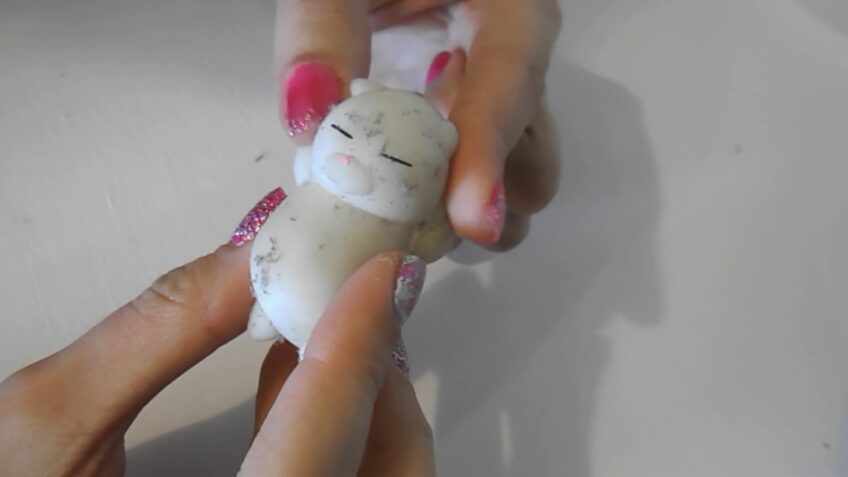
As with any cleaning project, the first step is to identify areas that need attention. Since they are designed to be fun and tactile, they often end up in tar pits of dirt, dust, and fingerprints! It is important to inspect each toy before we begin our cleaning process.
Let’s start by making sure the toys are free from any loose dirt or debris. For example, smooth surfaces can easily be wiped down with a damp cloth or paper towel. If there are stubborn fingerprints, try using a mild all-purpose cleaner on a soft rag or sponge and then wipe the affected area clean. Be sure not to use strong detergents as they could damage the color and texture of your squishy toy.
Now let’s take a look at crevices that require more attention such as buttons, holes, eyes, and legs – these areas tend to absorb oils more than other parts of toys and therefore may require additional steps to ensure cleanliness. Here we recommend using cotton swabs dipped in warm water to loosen the residue. Diligence should also be exercised when it comes to hard-to-reach corners such as underneath flaps or inside batteries compartments – use an old toothbrush or an old paintbrush for deep cleansing action!
Cleaning
Keeping them clean not only decreases their chances of harboring germs, but it can also extend their life. So, it is important to know how to clean and disinfect these toys.
In this section, we’ll cover the proper techniques for cleaning and disinfecting squishy toys.
Soak the items in warm soapy water
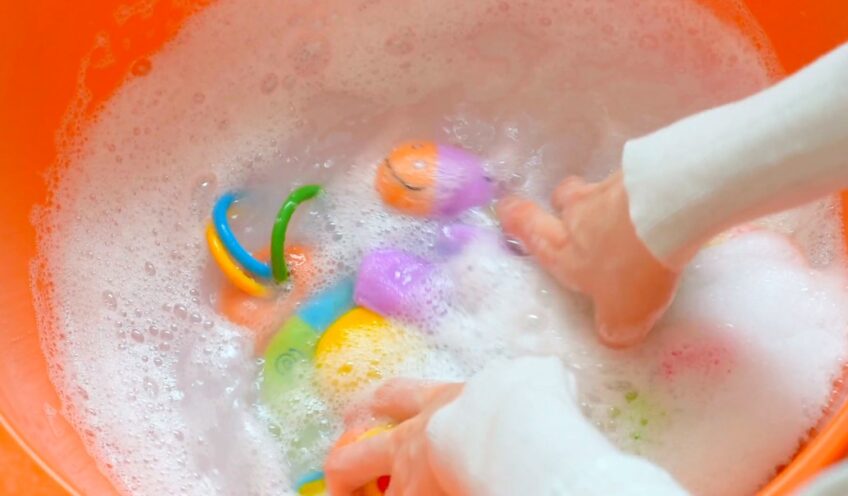
It is important to start by wiping down all surfaces with a damp cloth, removing any obvious dust and grime.
This can be followed by a thorough soak in warm soapy water. A mild dishwashing detergent is recommended for this, as it is gentler on the material. Soaking can take up to an hour depending on the item, and afterward, all excess suds should be washed away with clean warm water.
Additionally, items like polymer clay can be laundered in the washing machine as long as they are securely contained in a mesh bag or pillowcase — but please keep in mind that this may cause fading and lighten certain colors.
Scrub the items with a soft brush
Using a soft-bristled brush, such as a toothbrush, gently scrub the toys to remove any dirt or debris. This can be done in a sink full of warm soapy water or on a kitchen counter or other hard surfaces.
Make sure to brush the inside of any openings, like the crevices of the eyes. Rinse thoroughly and then dry with paper towels.
It is best not to submerge some squishy items, such as electronic toys, in water because it may damage them.
If you have stuffed animals, use an upholstery brush and vacuum attachment to vacuum off any dust and then spot clean by blotting any soiled areas with a cold damp cloth.
Rinse the items with clean water
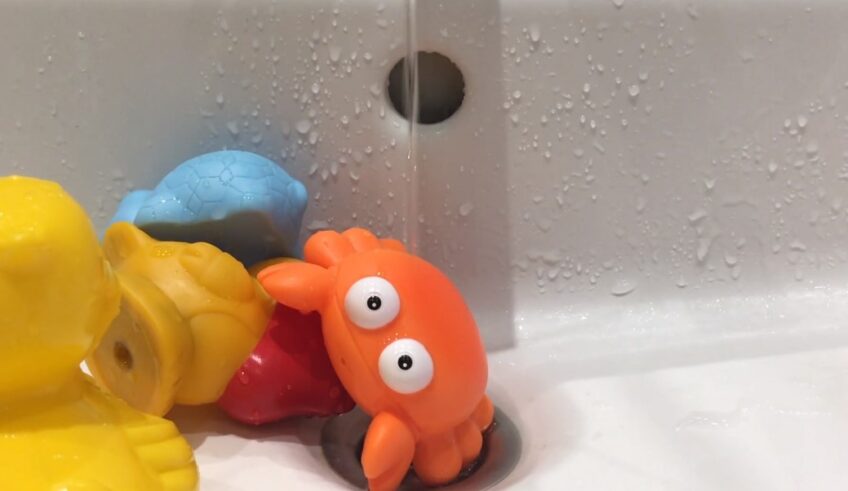
Before you begin to clean, it is important to rinse each item in clean, lukewarm water. This will help loosen up any dirt or stickiness and make scrubbing easier. If possible, use a soft-bristled brush to help dislodge any difficult spots.
Make sure all of the water is removed after rinsing—it’s best to use a cloth for this step as it can quickly absorb the liquid. You may also use a paper towel or a soft towel meant for cleaning items; avoid using regular towels as these tend to scratch the surface of toys during cleaning.
Disinfecting
Disinfecting is a vital step in the process of cleaning and caring for your squishy toys. This way, you will be able to make sure they are free from bacteria, microbes, and other germs that could cause illness.
In this section, we will discuss the proper way to disinfect your squishy toys and a few best practices you should follow.
Prepare a disinfecting solution
Once you have wiped down the surface, it is now time to prepare the disinfecting solution. This can be done by combining equal parts warm water and white vinegar in a bowl or spray bottle. If you plan to use this solution to clean a number of items, mix up a bigger batch that can be reused multiple times. For tougher stains or malodors, add a few drops of essential oil for additional antibacterial power.
Ensure that the quality of your distilled white vinegar is good as well as accurate measurements so that the water-vinegar solution will be powerful enough to disinfect without causing damage to your squishy toy. Once prepared correctly, use a fresh cloth to gently sop up the solution before dabbing it onto your squeaky toy and giving it one final rubdown. Allow it some time to rest and dry off before putting them away!
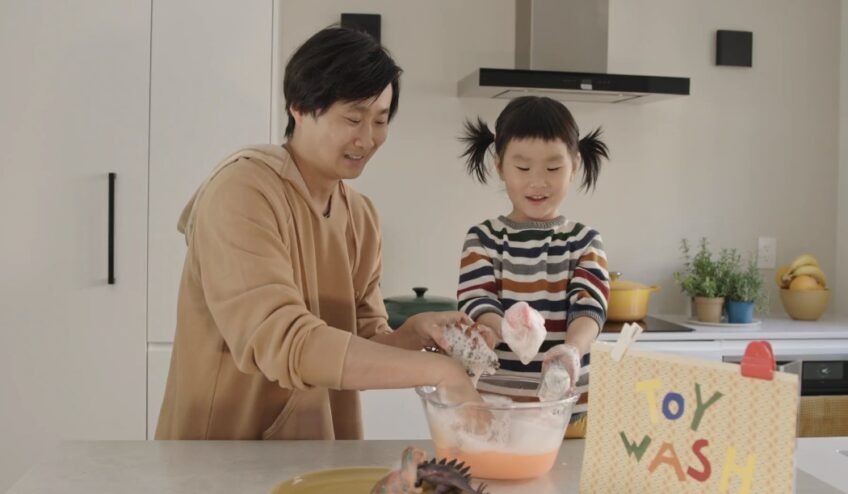
Soak the items in the disinfecting solution
Once they are clean from sticky spots and debris, it’s time to disinfect and sanitize them. To do this, you will want to soak the items in a disinfecting solution for at least 5 minutes. Soaking for longer than 5 minutes can help reduce the microbes present even more effectively. You can use a store-bought disinfectant or make your own by combining ¼ cup of chlorine bleach with 2 ounces of ammonia and 1 gallon of water. When using bleach, always make sure to wear gloves and a face mask since it is toxic when inhaled or ingested. If possible, use these cleaning solutions outdoors as many products contain harmful fumes that should not be inhaled.
Rinse the items with clean water
Once the sticky or grimy mess is removed, it’s time to rinse the items with clean water. Start by filling a bucket or other large container with cold water. If you choose to use a solution of soap and water, make sure that you only use a mild soap – like liquid dishwashing detergent, baby shampoo, or mild laundry detergent – and that everything is completely rinsed off. Soap residue left on toys can cause irritation to children’s skin if they come in contact with it and can even contain bacteria from high concentrations of cleaning agents.
As you are rinsing each item, be sure to rub lightly between your fingers to remove any remaining dirt particles, then let them soak for a few minutes before drying them off with clean paper towels or cloths. After all the items have been rinsed, let them air dry on a clean sheet or towel and placed in an area where they won’t become dirty again.
Drying
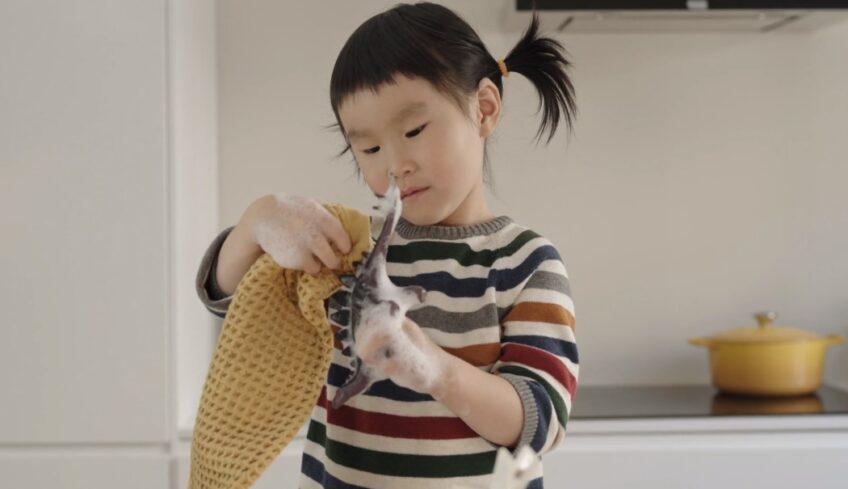
The best way to dry your squishy toys is to leave them out in the sun. This will ensure that all the water evaporates and that your toys won’t grow any mold.
If it’s raining, you can also dry your toys with a blow dryer but don’t aim too closely at the squishy toys as the heat can damage them.
Place the items on a clean cloth
To dry out the items, first, place them on a clean cloth. This will help draw out excess moisture and stave off future mold growth. The cloth should be switched out periodically, as needed, and left undisturbed until all of the items are completely dry.
It is important to keep the items away from direct sunlight as this can cause colors to fade or in extreme cases even distort the shape of some of the toys! During this time, it’s also a good idea to turn and rotate the items occasionally so that they dry evenly.
Once all moisture has been sufficiently removed, you can then move on to cleaning them up and disinfecting them.
Allow the items to air dry
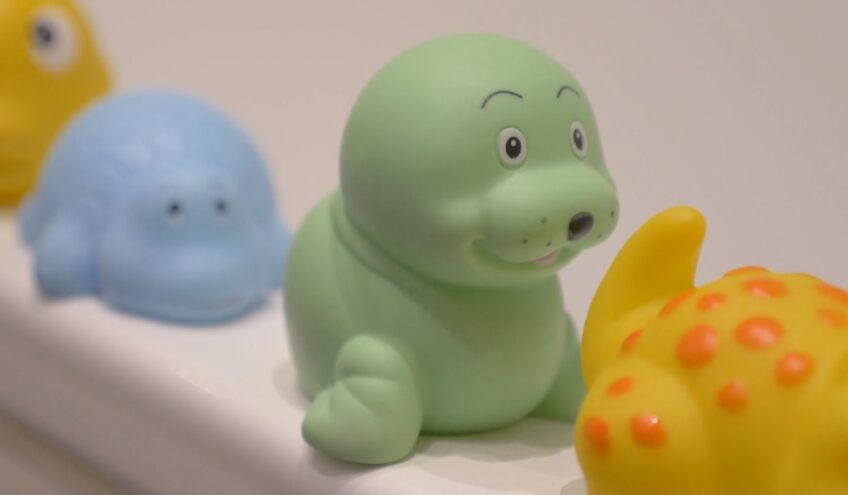
After cleaning, let the items air dry thoroughly before putting them away. Depending on the material, this may take from several minutes to several hours—or even days! Like washing before drying helps you reach into tight crevices and rinsing loosens any remaining dirt on your items’ surfaces, leaving them sitting out to air dry ensures that the items are fully dried and disinfected.
Air drying is especially important for soft and absorbent materials like cloth, foam, leather and rubber. If left wet or damp for too long, these fabrics can develop odors due to mildew formation or allow bacteria and molds to breed in the fibres. When it’s possible and not too detrimental to an object’s structure or purpose (like when it comes to foam toys or plush animals), it’s a good idea to pop materials in direct sunlight as UV rays can speed up the drying process by killing bacteria.
For objects with intricate parts where water can get trapped easily—such as those with small crevices or others made of metal—it’s often best to leave them aside somewhere else where you won’t forget about them so they can slowly dry over a period of time.
Wipe the items with a clean cloth
After rinsing the items, it is important to wipe them down with a clean cloth or towel. This is necessary to remove any water droplets that could end up forming mildew when the items are stored. Use either a paper towel or a microfiber cloth to dry the items, and then allow them to air dry if possible.
It may be necessary to wring out the moisturized cloth between uses since it can become saturated quickly when cleaning large objects with intricate parts. Wring out all of the excess water, and then place it in a dry place until needed again.
Maintenance
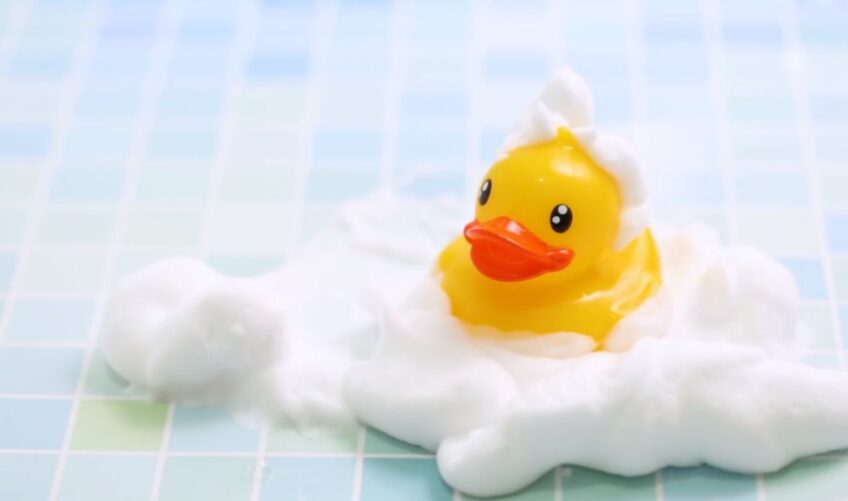
Keeping them clean and disinfected is essential for maintaining hygiene standards. Regular cleaning and maintenance of toys can ensure they stay in optimal condition and extend the life of the product.
Store the items in a clean, dry area
When you have finished cleaning and disinfecting squishy toys, store them in a clean, dry area away from any sources of heat or direct sunlight. If possible, keep them in the same container when not in use. This will help prevent dust and debris from settling onto the toys and making them dirty again. Placing a piece of cloth between different types of toys can also help avoid any cross-contamination from one item to another.
When it’s time to use the toys again, check for the accumulation of dust or dirt before allowing children to play with them. Giving them an occasional spritz with a disinfectant might also be helpful for keeping germs at bay.
Inspect the items for signs of damage or wear
You should inspect each item for any signs of damage or wear. If there are any tears, rips, broken seams, holes, marks, or discoloration, particularly around the ears or eyes, it is a good idea to discard the toy before cleaning and disinfecting it. Be sure to check all areas of the toy thoroughly as small rips and holes in the fabric may not be visible at first glance. It is important to discard any damaged items because they can harbor bacteria that can spread illnesses.
It is also essential to check for small pieces that could come off the toy during washing such as beads and buttons. Removing these pieces eliminates choking hazards and minimizes risks of injury from sharp edges that could be present on some toys.
Lastly, if possible see if the manufacturer has provided specific cleaning instructions for a particular product so you know how to best clean it properly— following these directions will ensure that you do not cause any damage when cleaning your items!
FAQs
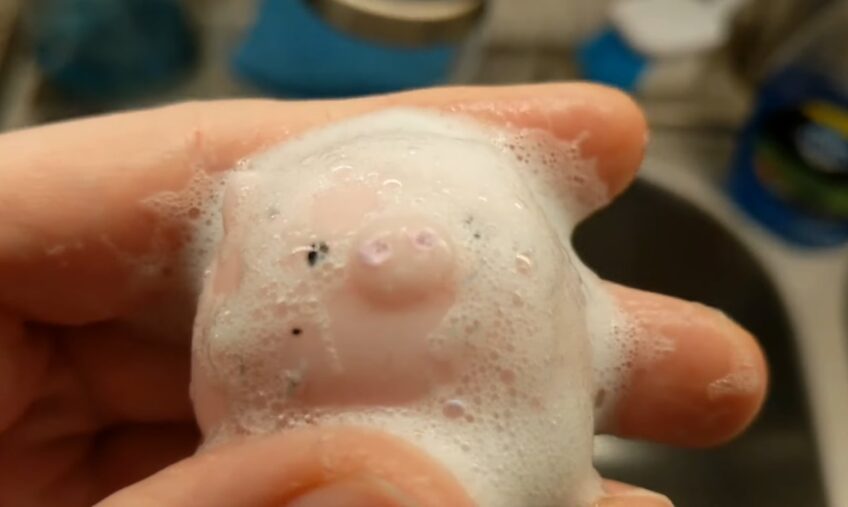
Can I use bleach to disinfect squishy toys?
Bleach should not be used to disinfect squishy toys as it can damage the foam material and potentially harm your skin.
Can I use rubbing alcohol to disinfect squishy toys?
Rubbing alcohol can be used to disinfect them, but it is important to dilute it with water and avoid using too much as it can damage the foam material.
How do I dry squishy toys after cleaning?
They should be air-dried thoroughly before use, and it is important to avoid using excessive heat or sunlight as it can damage the foam material.
Are there specialized products available for cleaning and disinfecting squishy toys?
Yes, there are specialized products available, such as toy cleaners and disinfectants, that are designed for use on squishy toys.
Can I use baby wipes to clean squishy toys?
Baby wipes can be used to clean squishy toys, but it is important to avoid using too much moisture and to dry them thoroughly.
Can I use a hairdryer to dry squishy toys?
A hairdryer can be used to dry squishy toys, but it is important to use a low heat setting and avoid using too much heat.
Can I store squishy toys after cleaning?
They can be stored after cleaning, but it is important to ensure they are dry and free from moisture to prevent mold and mildew.
How can I prevent my squishy toys from getting dirty?
To prevent squishy toys from getting dirty, it is vital to store them properly and avoid exposing them to excessive dirt or moisture.
Conclusion
In conclusion, cleaning and disinfecting your squishy toys is an important step in maintaining their appearance and ensuring your health and safety. By following these simple tips and using household items or specialized products, you can restore your squishy toys to their original softness and keep them free from dirt, grime, and bacteria. It is recommended to clean and disinfect your squishy toys regularly to prevent buildup and maintain their longevity.
So, the next time your squishy toys start to look sticky and unhygienic, don’t hesitate to give them a good cleaning and keep them sparkling for all your squishing needs.
